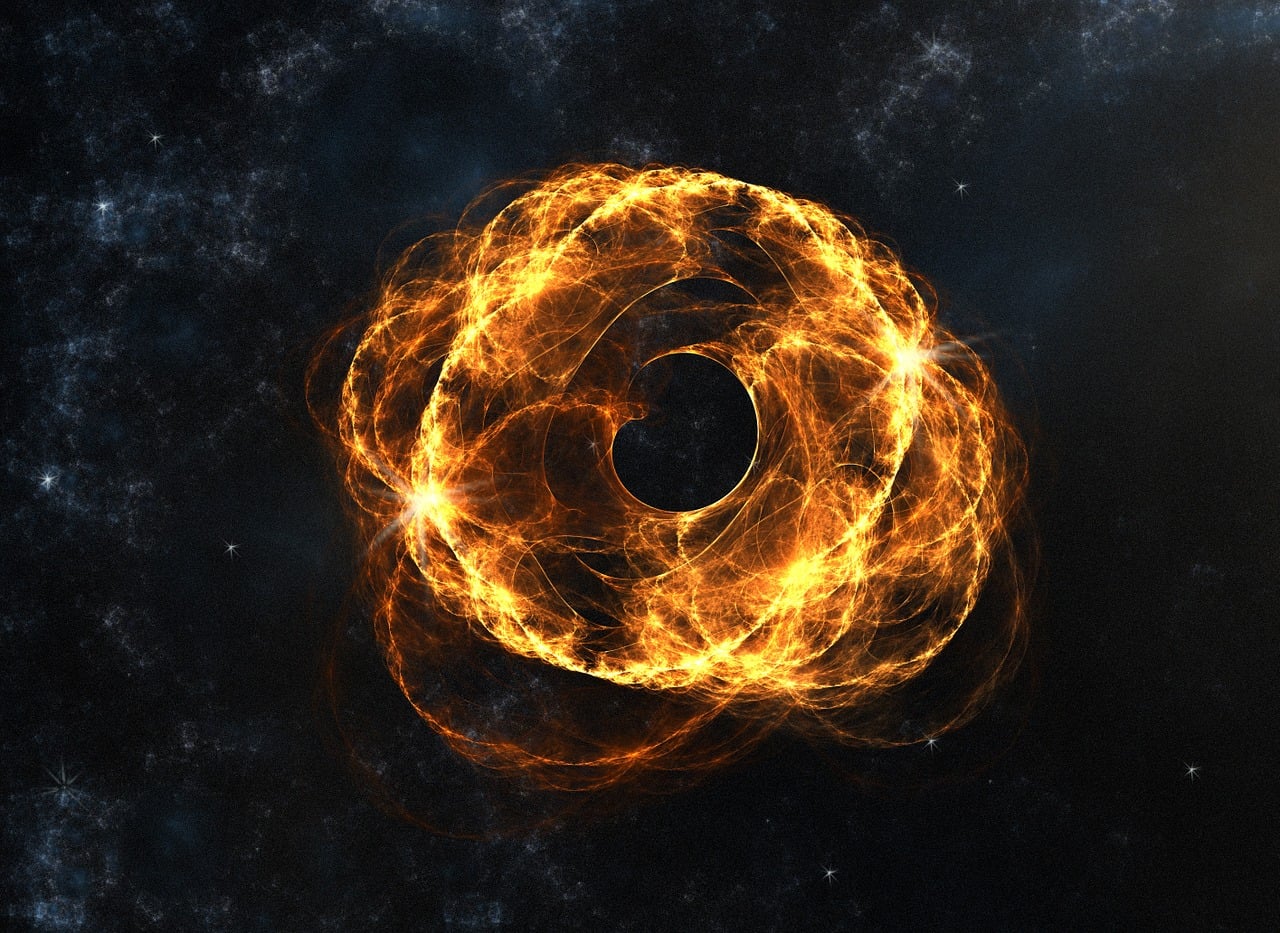In their efforts to learn as much as possible about all the objects in the universe, scientists came up with a fascinating but also potentially devastating discovery. They discovered two supermassive black holes on a collision course.
The pair of black holes is more than just supermassive, each black hole has a mass of more than 800 million suns. Their collision course seems to be a spiral, as they gradually draw closer to one another. Once they approach sufficiently to each other, they’ll start sending gravitational waves that will make ripples through space-time.
“Supermassive black hole binaries produce the loudest gravitational waves in the universe,” co-discoverer Chiara Mingarelli, an associate research scientist at the Flatiron Institute’s Center for Computational Astrophysics in New York City said in a statement.
The study led by Andy Goulding, an associate research scholar at Princeton University was published in The Astrophysical Journal Letters. If scientists manage to detect the gravitational wave background, it’ll help solve some of the biggest mysteries about the universe, like how often galaxies merge, or whether two supermassive black holes on a collision course merge or become stuck in the never-ending warps of their own.
“It’s a major embarrassment for astronomy that we don’t know if supermassive black holes merge,” said study co-author Jenny Greene, a professor of astrophysical sciences at Princeton. “For everyone in black hole physics, observationally this is a long-standing puzzle that we need to solve.”
Astronomers have difficulties spotting the stalled pairs because their collision becomes too difficult to distinguish even when they’re much farther than 1 parsec apart. Also, they don’t produce intense gravitational waves until they become one at final-parsec as they come closer together.
“This noise is called the gravitational wave background, and it’s a bit like a chaotic chorus of crickets chirping in the night,” said Goulding. “You can’t discern one cricket from another, but the volume of the noise helps you estimate how many crickets are out there.”
Detecting gravitational wave background requires a lot of time and patience, as well as many monitored stars. The team managed to detect two supermassive black holes on a collision course using the Hubble Space Telescope. While they can’t be directly seen using the optical light from Hubble, scientists focused on bright clusters of luminous stars and warm gas.
After making their observations, the team collaborated with gravitational wave physicists Mingarelli and Kris Pardo, a Princeton graduate student, to find the context of the gravitational wave background. Previously-created models were focused on computer simulations instead of observations of supermassive black hole pairs.
Based on their findings, scientists predict that there are 112 nearby supermassive blackholes that produce gravitational waves. That said, they expect that the next detection of gravitational wave background from black holes merging together will come in the next five years. Right now, scientists plan to continue surveying for new supermassive black hole pairs, which could help make new predictions.





